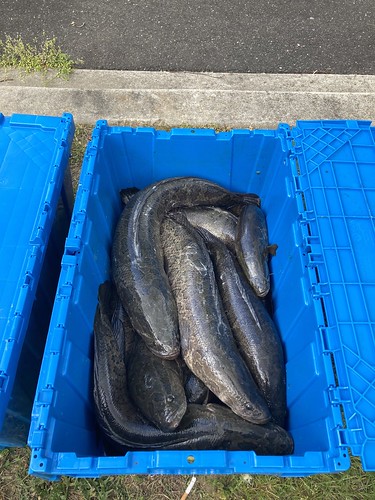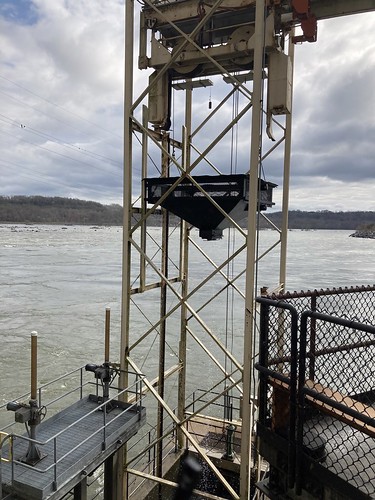Chesapeake Channa Could Spawn More than Once a Year in Upper Bay, Maryland DNR Study Finds

Chesapeake Channa captured at the Conowingo Dam fish lift. Maryland Department of Natural Resources photo.
A study conducted by Maryland Department of Natural Resources Biologist Dr. Joseph Love illuminates one of the biological factors that could be contributing to Chesapeake Channa’s efficient spread through Maryland’s waters.
The study, published in the July 2024 edition of Northeastern Naturalist, found that the majority of female Chesapeake Channa, also known as northern snakehead, collected from the upper Chesapeake Bay carried eggs in two distinct sizes, suggesting those fish could spawn twice a year.
In 2002, Chesapeake Channa adults were released to a pond in Crofton, Maryland, thousands of miles from their native habitat in East Asia. The fish were thought to be eliminated, but additional illegal introductions of the species in Maryland occurred. In the following decades, their range expanded to an average of three new Chesapeake Bay waterways per year, according to a study by Love and Newhard in 2018. Today, this invasive species is established in all tidal and many non-tidal subwatersheds in Maryland.
Chesapeake Channa are prolific invasive predators, well adapted to spread in new environments, yet their reproductive traits have not been well studied. What separates an invasive species from a non-native species is its ability to flourish in the ecosystem to which it has been introduced and its aptitude to cause damage to native inhabitants in the process.
“It is important to document life history traits of a species in different habitats because we know there is plasticity in the traits of fishes based on the environment,” said Love. “This study fills a gap in what we know about Chesapeake Channa reproduction in the upper Chesapeake Bay.”

Invasive fish are caught by fish lifts at Conowingo Dam. Maryland Department of Natural Resources photo
Biologists collected fish at Conowingo Dam from April to June 2021 and 2022. A fish lift at the dam assists migrating fish species, such as American shad, during their spawning run. It transports them above the dam into the upper Susquehanna River and their traditional spawning areas. Chesapeake Channa are also known to travel upstream in search of nesting grounds at this time and when they enter the fish lift, technicians remove them to stall the expansion of their range further up the river.
Love weighed and measured 56 female Chesapeake Channa specimens before dissecting them to examine the quantity and size of the eggs stored in their ovaries. He used digital photos and computer software to measure the diameter of the eggs.
The photos confirmed that the average number of eggs, known as fecundity, increased with the size (mass) of the female. The fish held an average of 63,569 eggs. For every additional gram of mass of the female’s body, they averaged 27 more eggs in their ovaries. Most significantly, more than half of the ovaries held a group of eggs in a distinctly smaller size.
Dr. Love examined eggs from an additional July collection of fish to supplement the findings from the peak of the spawning season. The female fish in that collection had fewer eggs at larger sizes, which supports the theory that they can partially spawn in the spring and holdover eggs that continue to mature for spawning in late summer or fall.
Chesapeake Channa are such an effective invasive fish because they have biological and behavioral traits such as broader water temperature tolerance, aggressive predatory behavior, high egg production, and parental guardianship. Those traits and this new evidence of multiple spawns underscore why they have become an environmental nuisance in Maryland and other parts of the United States.
Fisheries managers consider a species’ biology when they create strategies to control nuisance fish. The author suggests that it is crucial to focus Chesapeake Channa harvesting efforts on the largest fish in the period before they spawn.
Fishing for Chesapeake Channa has become popular in Maryland and helps the state manage the population. They are also considered excellent table fare. There is no season or limit for harvesting, and Maryland DNR has many resources available on its website for anglers interested in targeting Chesapeake Channa.
Article by Sinclair Boggs, marketing strategist for Maryland Department of Natural Resources’ Fishing and Boating Services.

